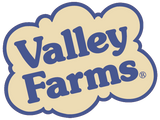The Finch Research Network recently released its 25th Annual Winter Finch Forecast for 2023-204, just in time for the New Year! This year’s Winter Finch Forecast anticipates movement in varying degrees of intensity across areas and species.
What Affects Finch Migration
Forest conditions largely affect Finch migration patterns. While the boreal forest in Ontario saw a below average cone crop this year, coastal regions near the Atlantic and Pacific had an above-average amount of cone crops. From Lake Superior all the way eastward to the Atlantic coast and southward to the northeastern states, there was extensive bumper Eastern White Pine crop growth. This yielded higher than average deciduous tree seeds and fruit. This information helps indicate where individual species of Finches may turn throughout their travels as we wrap up 2023 and move into 2024. Here are some of the highlights from the official forecast.
Pine Grosbeaks
The widespread crop of Mountain Ash berries throughout Canada is promising, but patchy areas away from the coast may affect movement overall. Still, the upper Midwest states and cities in western Canada will likely see flocks of grosbeaks around fruit trees and individual bird feeders, should birders choose to fill them with black oil sunflower seeds.

Purple Finches
The Purple Finch will see a major departure from its typical behavior. There has been a huge influx of southward motion, which is only expected to continue throughout the winter. Purple Finches from the east are expected to head to southern Canada and the northern part of the United States. In the upper Midwest, there will likely be another strong flight southward, further towards the middle of the US. Ornithologists predict a late movement in January and February, with Finches flying as far south as the Carolinas. This is due to the depletion of eastern crops. Should you live in these areas, fill your feeders with black oil sunflower seeds to support them on their journey.

Common and Hoary Redpolls
The healthy Alder crop across the entirety of the boreal forest is good news for many, but the sparse spruce and birch crops may affect Redpoll migration. These birds will likely fly south this winter to escape the boreal forest. Nyjer is a great addition to bird feeders should you want to nourish these birds along their path. Just make sure the Nyjer is imported from Ethiopian Nyjer growers, as this is the recommendation from Dr. David Horn of the National Bird Feeding Society. P.S. Valley Farms® always partners with Nyjer suppliers that import from Ethiopia.

Pine Siskins
Another species that has started to abandon the boreal forest is the Pine Siskin. Sightings of thousands were reported in Duluth, Minnesota and eastward to Tadoussac, Quebec. This is ostensibly due to the poor White Spruce crop from this year.

White-Winged Crossbills
The strong presence of spruce crops in Alaska and Newfoundland has drawn the White-Winged Crossbill away from Canada’s interior. The prediction is for nomadic movement of small flocks to go south this winter as they look for food. Should you live in the upper Midwest States or in southern Manitoba, you may be lucky enough to spot one in an urban area.

Red Crossbills
2024 will be a pivotal time for the Red Crossbill. Predictions about whether the Eastern White Pine crop will be enough to sustain these birds to initiate feeding are uncertain. Many wonder if there will be a widespread dispersal, with Red Crossbills looking every which way for food. The general consensus about this species is that it will show up in the east once WInter progresses into Spring.

Evening Grosbeaks
The abundance of Chokecherry will keep Evening Grosbeaks in the boreal forest for most of the winter. They are also likely to be found throughout southern Quebec, the Maritime provinces, in New England, and in New York. As for Evening Grosbeaks currently in northwestern Ontario, they are expected to seek out feeders in towns and neighborhoods further south.

As a backyard birder, you can do your part by ensuring that your feeders are filled with plenty of finch bird food. Wild finch bird seed can be purchased individually or in bulk directly at Valley Farms® or from our Amazon storefront. Happy feeding!




